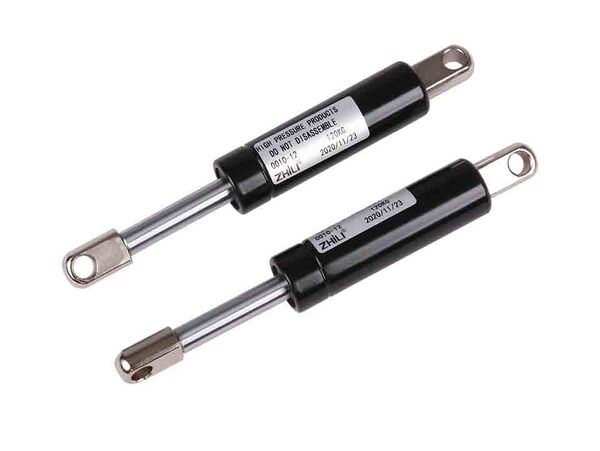If you are interested in our products ,please contact our team
Gas springs, also known as gas struts or gas lift supports, are versatile mechanical components widely used in various industries, ranging from automotive to furniture. Selecting the right gas spring for your project is essential to ensure smooth and safe operation. In this article, we'll guide you through the process of choosing the perfect gas spring to match your specific requirements.
Before diving into the selection process, thoroughly understand your project's requirements. Consider factors such as the weight of the object to be lifted, the desired range of motion, and any specific environmental conditions the gas spring will face. This understanding will serve as a foundation for making informed decisions.

Gas springs come in various force ratings, typically measured in Newtons (N) or pounds (lbs). Calculate the force required to support and lift the object while factoring in the weight, dimensions, and angles involved. Make sure to include any additional forces, such as wind resistance or external loads, that the gas spring needs to counteract.
The stroke length is the distance the gas spring travels between its fully extended and fully compressed positions. Measure the distance the object needs to move and consider any space limitations. Choose a gas spring with a stroke length that accommodates your project's movement requirements.
Consider the environment in which the gas spring will operate. If it will be exposed to extreme temperatures, moisture, or corrosive substances, opt for gas springs with appropriate coatings or materials to ensure longevity and performance in challenging conditions.
Gas springs have specific mounting orientations that affect their functionality. Depending on the desired movement and force distribution, choose a gas spring with the appropriate mounting direction. Follow the manufacturer's guidelines to ensure optimal performance.
Gas springs come with a variety of end fittings, such as ball studs, eyelets, and clevises. Select the right end fitting that suits your application and ensures a secure connection between the gas spring and the object.
Some applications may require controlled speed and damping to prevent abrupt or rapid movements. Consider gas springs with adjustable speed control or built-in damping features if your project demands controlled motion.
Choose gas springs from reputable suppliers known for their quality and reliability. Read customer reviews, check certifications, and inquire about warranty options to ensure you're investing in a dependable product.
Selecting the right gas spring for your project is a critical step in achieving optimal performance and safety. By understanding your application, calculating force requirements, considering stroke length, evaluating operating conditions, and choosing appropriate end fittings, you can confidently choose a gas spring that aligns with your project's needs. Remember, a well-chosen gas spring enhances the functionality and efficiency of your application, contributing to its overall success.